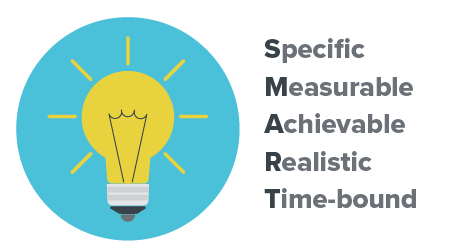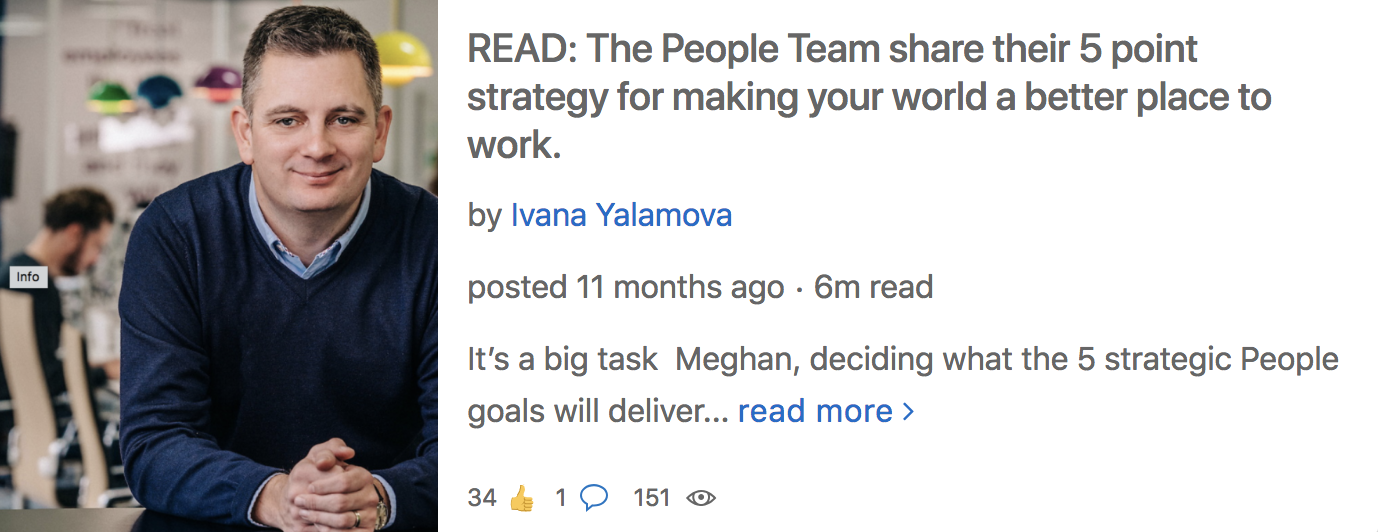It's the beginning of a brand new year and if you’re anything like Reward Gateway’s People Team, you’ve taken out your lucky pen, trusty notebooks and calendar to start preparing for the year ahead.
You likely have a list of new engagement goals in mind, but reaching them may seem like a daunting task at first glance.
Take a step back and start the goal setting process with a clean slate to think about what will truly help improve engagement at your organisation. In this post, I’ll walk you through five easy steps to set people goals that your team will actually reach.

Start with why
Before you start with the goal setting process in the beginning of every year, there are a few important things to do:
-
Consider what’s important for your business this year.
-
Listen to what your people are telling you through various communication channels such as exit interviews, Glassdoor or employee surveys.
-
Talk to people in the office to find out what’s important to them and what’s the mood like in the company.
-
Look at projects you’ve delivered the year before and analyse their success.
These provide the hard data to use before you draft your People Team strategy and goals for the new year.
Remember, it’s important to ask yourself one simple question about each goal: Why?
Goal setting
We’re not fixed on the terminology, and we sometimes use goals and objectives interchangeably. No matter what terminology you like to use, the important thing is to create goals that are SMART, meaning:

If goals are the destination, an objective is a measure of the progress that is needed to get to the destination.
Once you determine your why and make sure your goals are SMART, it’s time to start planning your strategic goals. Here are some ideas to get you started when thinking about your own organisation:
6 ideas to get you started on improving your people goals this year:
| 1. Boost employee engagement and employee motivation |
| 2. Improve your leadership communications with employees |
| 3. Get on the list of best places to work |
| 4. Spotlight recognition moments |
| 5. Improve your Employee Value Proposition |
| 6. Bring more attention to your company culture |
Once you have your goals outlined, you may be wondering what’s next? Many teams start off with great goals, but then find it hard to follow through.
Here are five tips to help you not only create SMART goals, but achieve them too:
Tip #1: Every goal needs an owner
As simple as this sounds, when one person is accountable for one goal, it’s more likely that the goal will see to an end. We’ve all heard the story that begins in a channel on Slack…
"The Slack channel had 4 participants, one was called Everybody, one was called Somebody, one was called Anybody and the other was called Nobody. An urgent message came up with an important job to be done. Everybody was sure that Somebody would do it. Anybody could have done it, but Nobody did it. All four of them obviously forgot the Own It value.
Somebody got angry about that because it was Everybody’s job. Everybody thought Anybody could do it. Nobody realised it was Everybody’s job. Everybody wouldn’t do it. It ended up that Everybody blamed Somebody when Nobody did what Anybody could have done. Worst of all Everybody had always told Anybody about the Own It value but Nobody was the only one that lived it."
Meaning, in the goal setting stage, it’s key to attach one main goal per person and to set clear expectations for those goals from the get-go.
Tip #2: Make goals visible to everyone
The People Team uses a project management tool called Monday.com, and the goals are visible for the whole team to see and have access to. Everyone can see what someone else is working on and the status of their tasks and goals.
We also make these visible to the company, thought our employee engagement platform, boom!, in line with our beliefs in being open and honest, and also so the company keeps us accountable to our commitment.

Visibility drives accountability.
Aligning individual, team, department, and company goals drives organisations to success quicker than ones that don’t set goals and run different ways to achieve the same mission.
Tip #3: Set goals that motivate you
When setting goals for yourself, you’ll want to make sure that the goals are something that you really want to achieve and something that’s important to the business. When we create our People Team goals and select goal owners, learning is always a key engagement driver.
This doesn’t mean shying away from challenges – make sure all team members are presented with enough challenge with the goals and every day jobs.
Our team members are constantly challenged with their goals and have the opportunity to learn something new. And when the goals are set, the person who owns the goal is the one whose area of responsibility is most affected by that goal. This ensures that the owner has high interest in the goal, and enough knowledge to achieve it with the help if the team.
Tip #4: Stick with it
In the beginning goals can be daunting, scary and the end result seems so far away. Remember to just stick with your plan, set deadlines, reminders and time slots to work on your plan. Some of the details could change along the way (as an agile HR team, ours do all the time) – you may find a better way to achieve a task, or some of the objectives could change too. But as soon as you keep the end goal, or destination, in mind, and you’re making progress, then you’ll be sure to get there.
Tip #5: Short-term goals are sometimes easier to achieve than long-term goals
In all of the above, we spoke about our yearly goals. But here’s something we’ve learned from experience. A year can feel like a very long time, and it’s easy to lose focus and keep the end in mind when it’s so far away. This is where short-term (usually quarterly) goals come in handy.
Seeing you’ve achieved something in three months is not only rewarding and encouraging, but it can also be a stepping stone or a milestone towards achieving a bigger goal. We know to break goals down into small chunks and quarterly milestones.
Key takeaways
| Goal setting is much more than saying you want something to happen. |
| Defining goals that inspire and motivate you are more likely to be achieved than goals you’re not interested in achieving, or aren’t relevant to your role or purpose. |
| Ownership and visibility drive accountability. |
| If setting long-term goals is tough, then short-term goals, such as quarterly goals, is the way to go. |
Best of luck setting your own people goals this year. If I or any of my colleagues can lend support in creating or supporting your biggest goals, you know where to find us.
 Catrin Lewis
Catrin Lewis




